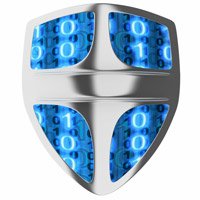Keep your computer from damage and Virus! If you are infected with computer virus or other attack, then Data, File, or even your business may be in danger. Therefore, let us keep our computers properly, so that the things we do not want not occur. Here are some tips on how to keep your Computer.
Computer security threats
There are many types of threats to computer security especially those connected in the internet. These include viruses, spywares, worms, Trojan horses, (Denial-of-Service) DoS and (Distributed Denial-of-Service) DDoS attacks.
- Virus is a malicious code that causes malfunction, infect or corrupt files in the computer.
- Worm is made of small code that spreads over the network nodes of the victim's computer. It sends itself, to other computers included in the contact list of the victim's computer. It consumes significant resources of the computers and the network.
- Trojan horse is a harmful code, embedded in a harmless software. The name of Trojan horse was adopted from the Greek mythology where the Greeks built a giant horse and stuffed several soldiers inside secretly during their war against Trojans (people of Troy). The horse was offered as gift to the Trojans by the Greeks who sailed away from Troy as sign of retreat. The Trojans pulled the giant horse inside the city and celebrated the victory against the Greeks. When they were all drunk and fell asleep. The Greek soldiers inside the horse got out and opened the city gate and successfully captured Troy.
- DoS and DdoS attacks are attacks on a computer system or network that causes a loss of service to users, typically the loss of network connectivity and services by consuming the bandwidth of the victim network or overloading the computational resources of the victim system.
- Spyware is a software that secretly collects personal information about users without their consent by logging keystrokes, recording Internet web browsing history, and scanning documents on the computer's hard disk for marketing and fraudulent purposes. This is often used interchangeably with adware and malware.
1.Installing Antivirus Software (Information About Antivirus Software is here.)
2.Activate Your Firewall (In Your Antivirus Software Or On Your Operating System It Self)
3.Install Anti Spyware Software (Download spyware terminator here : http://www.pcrx.com/spywareterminator/ )
4.Be careful with the USB plugged in your computer, it probably is not safe (For more information, please see here ,in additional section)
5.Scan Your Computer Everyday
6.Updating Your Operating System Or Your Antivirus ,Spyware ,ETC To Up To Date
7.Protect your private data, such as It is important to prevent identity theft. For example, when purchasing on e-commerce site, make sure that the page where you can help protect your personal data, as with “https” in the URL in the address bar of your browser displayed is called.
8.Think of the possibilities before you click on a link. This embody many cyber-criminals are well-known companies, or send a “phishing” e-mail that you prompts, click on a link. Look at online retailers and not click on email links, if you are sure of the source. Usually you can just hover over an e-mail link to the actual Internet address is, to see, but not always. If it looks suspicious, do not click it as it will send you to steal a website to your data.
9.Use an Internet browser and operating system that has good safety features. Be sure your browser settings offer maximum privacy and security and the assurance that your Updating the operating system regularly to make the most of the security patches.
10.Use strong passwords at all times. For example, create a password for every site you go, and keep them in a safe place. Use circumvent letters, numbers and other characters blends in an effort to automated password programs.
11.It is important to perform regular backups. If your computer suffers a virus or a worm, may lose your most important information. Make sure that you frequently make a backup copy of all essential documents and store them in a safe place.
12.Secure Your Wireless Network
13.ETC
Please see the article on how to secure your USB here.







0 Comment:
Post a Comment
Please comment here, do not be shy and feel free to leave comment here. Devote all your opinion. But don't spam.